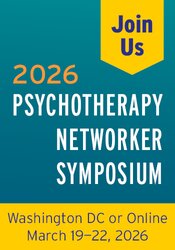Recognizing Dysfunctional Family Patterns in Clinical Practice

Family dynamics often set the stage for how clients relate to themselves and others. When those dynamics are shaped by neglect, abuse, or chronic invalidation, they can become entrenched patterns that quietly perpetuate pain. As clinicians, our responsibility is twofold: first, to help clients recognize the signs of dysfunction without imposing our own assumptions, and second, to guide them toward choices that foster healing and agency.
How to Recognize Dysfunctional Family Patterns
Dysfunction is rarely obvious at first glance. Many clients arrive using terms like “toxic” or “unhealthy” without being able to identify exactly what makes the relationship painful. The task at hand is to translate these vague labels into clear patterns. Repeated emotional neglect, verbal put-downs, chronic criticism, or the constant overriding of a client’s autonomy are all signals of dysfunction. Even when clients minimize these experiences, perhaps rationalizing that “my mom had to work” or “my father didn’t mean it,” naming what happened gives form to the harm.
Often these patterns emerge around predictable triggers: holidays, funerals, weddings, or anniversaries. Year after year, clients may find themselves re-experiencing the same distress without recognizing that the family system is replaying itself. Other times, dysfunction shows up as role reversal, where the client has long been expected to meet a parent’s emotional needs. When clients present with broad mistrust (“I don’t trust men” or “I can’t trust women”), it can be useful to trace these global beliefs back to specific family relationships where trust was broken. By making the invisible visible, you help clients connect current struggles with their family of origin.
How to Manage Our Own Biases
Before we can effectively help clients, it’s essential to reflect on our own family beliefs. Many of us carry unexamined assumptions about what “healthy” families should look like. Estrangement, for instance, may feel unthinkable for one therapist and entirely reasonable to another. Without awareness, these biases can seep into our clinical stance, influencing how we validate or challenge a client’s choices. Asking ourselves where we feel reactive (whether in response to stories of parental cut-offs, sibling rivalry, or neglect) helps ensure that the client’s truth remains central.
How to Help Clients Choose a Path Forward
Breaking dysfunctional cycles rarely comes down to a simple decision to stay or leave. Instead, clients benefit from exploring a spectrum of possibilities. Some may choose to remain in contact but shift how they engage. For these clients, therapy becomes a place to identify what they can and cannot tolerate, to experiment with limiting the length or frequency of visits, and to create self-care practices that buffer the emotional aftermath of family interactions.
Others may decide that healthy distance is the most sustainable choice. This might mean less frequent communication, restricting certain topics of conversation, or redefining what “relationship” means. A connection does not need to be close to exist; sometimes cordial, surface-level contact is the healthiest option.
In cases where repeated attempts to set boundaries are ignored or when the relationship consistently inflicts harm, clients may choose to sever ties entirely. When this happens, our role is not to push them toward reconciliation but to support them in grieving the loss, including the absence of closure, and to validate the complex mix of relief, guilt, and doubt that often follows.
How to Go from Dysfunction to Agency
Ultimately, the goal of therapy is not to fix family members but to empower clients to reclaim agency in how they engage with their families. By noticing patterns, exploring boundaries, and rehearsing new ways of responding, clients can learn that they are not bound to repeat old cycles. Whether they choose connection, distance, or separation, what matters is that the decision is theirs. In guiding them toward that realization, we help clients move from living in reaction to their families to creating relationships on their own terms.

Designed to cater to therapists at all career stages, this course is sure to enhance your healing skills whether you’ve been on the job 20 weeks or 20 years. And since our experts have hand-selected these techniques, and will show you exactly how to use them, no prior experience with any of these modalities is required. And with 3 FREE BONUS trainings on intergenerational trauma, forgiveness, and boundaries featuring Frank Anderson, MD, Nedra Glover Tawaab and Mariel Buqué, PhD, this may be the most comprehensive relational trauma program we’ve offered yet.

Featuring dozens of the field's leading innovators, and a community of over 5,000 of your devoted colleagues, this is the place to access the latest advances in the field and discover a range of possibilities to bring fresh ideas and inspiration to your practice. Plus, you’ll have the most fun you’ll ever have at a professional conference!





